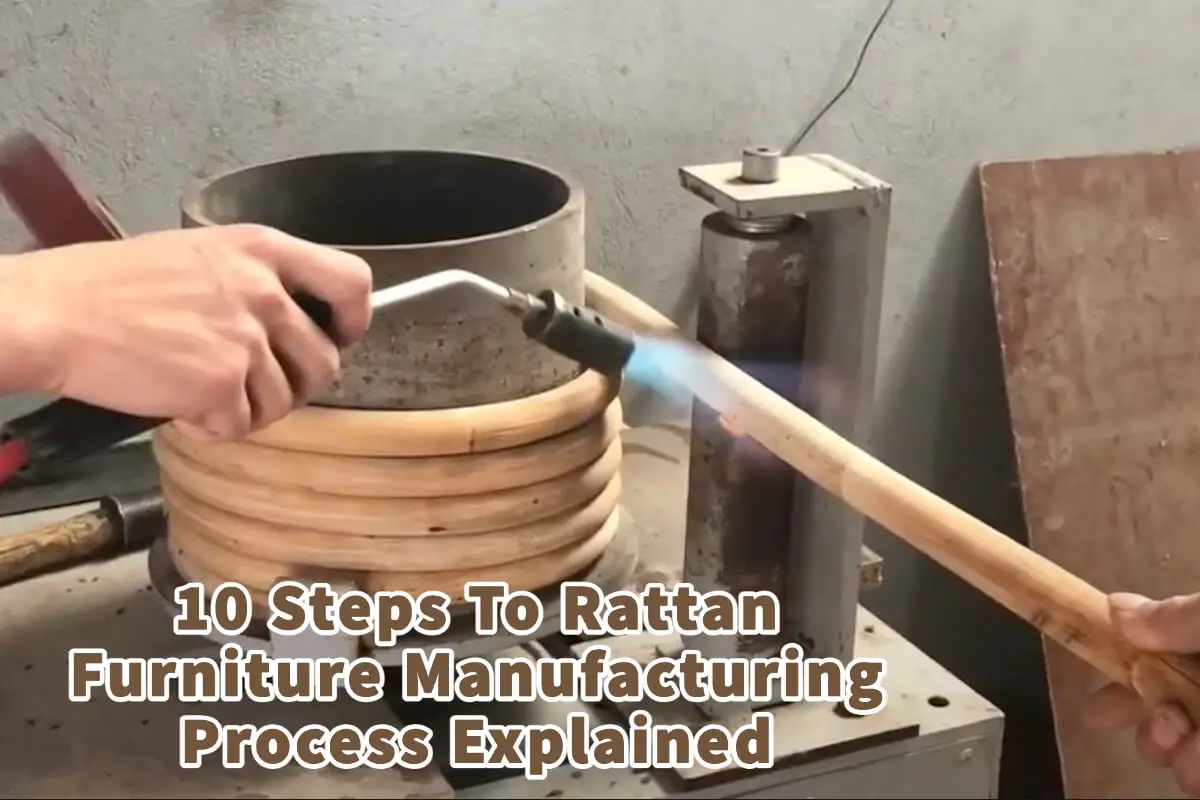When you look at a beautiful piece of natural rattan furniture, most people do not realize how many steps it has taken for that rattan furniture to arrive in your home.
Rattan furniture requires many steps in the manufacturing process. Each step of rattan furniture must be carefully manufactured; skilled workers are required to manufacture rattan furniture. Rattan furniture is shaped by bending, weaving, or wrapping rattan over a frame. Working with rattan is a labor-intensive process.
Table of Contents
- 10 Rattan Furniture Manufacturing Process and Steps Explained
- Step 1 – Rattan Material Is Cut
- Step 2 – Straightening Rattan Material
- Step 3 – Bending Of Rattan
- Step 4 – Smoothing The Rattan Material Surface
- Step 5 – Assembly Of Rattan
- Step 6 – Weaving Of Rattan
- Step 7 – Finishing And Securing Rattan Materials
- Step 8 – Burn Off Small Fibers And Check Rattan
- Step 9 – Finish Or Top Coat Is Applied
- Step 10 – Final Inspection Of Rattan Furniture And Packing
- Basic Types Of Rattan Furniture Production Explained
- Frequently Asked Questions
- Related Content
10 Rattan Furniture Manufacturing Process and Steps Explained
Like any handmade furniture, rattan furniture requires several steps. All the steps are mainly handcrafted, so when you have a piece of rattan furniture, it is truly a handmade item.
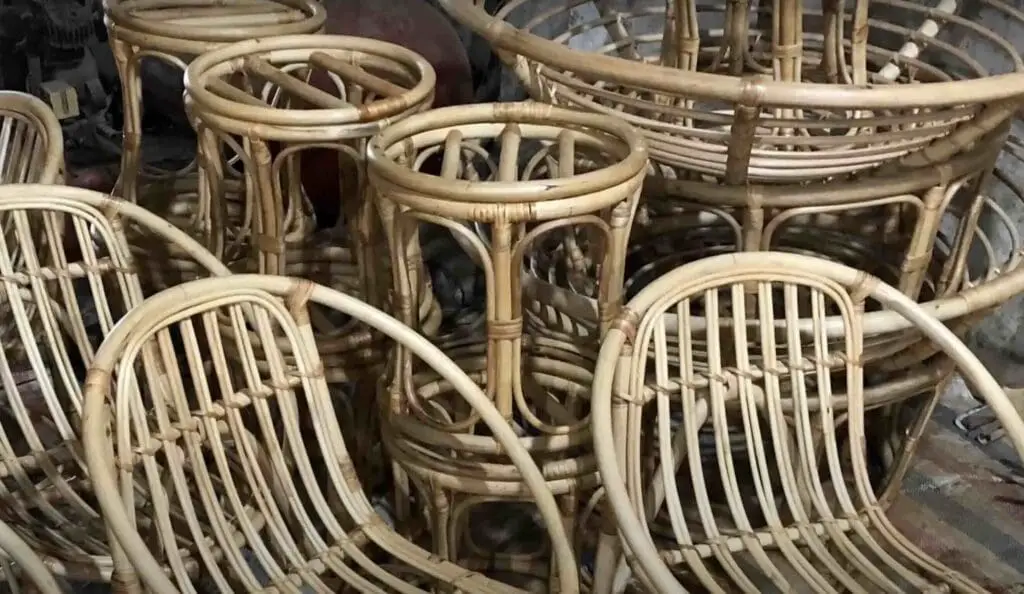
Most rattan furniture products will have ten basic steps as follows:
Step 1 – Rattan Material Is Cut
The first step in any rattan furniture production is rattan material must be cut. It needs to be sorted and then cut into its desired size.
Part of this process is that qualified workers must also understand the material. They must be able to understand the different thicknesses, hardness, curvatures, and colors to ensure that the right part of rattan is used for the correct part of the furniture.
Step 2 – Straightening Rattan Material
Rattan is a natural material that sometimes bends, curves, or twists naturally. So the factory then must straighten the rattan for the rattan to be used in the desired product.
Sometimes, the rattan will be steamed to form the materials. The steaming and heating of the rattan make it pliable and easier to work with.
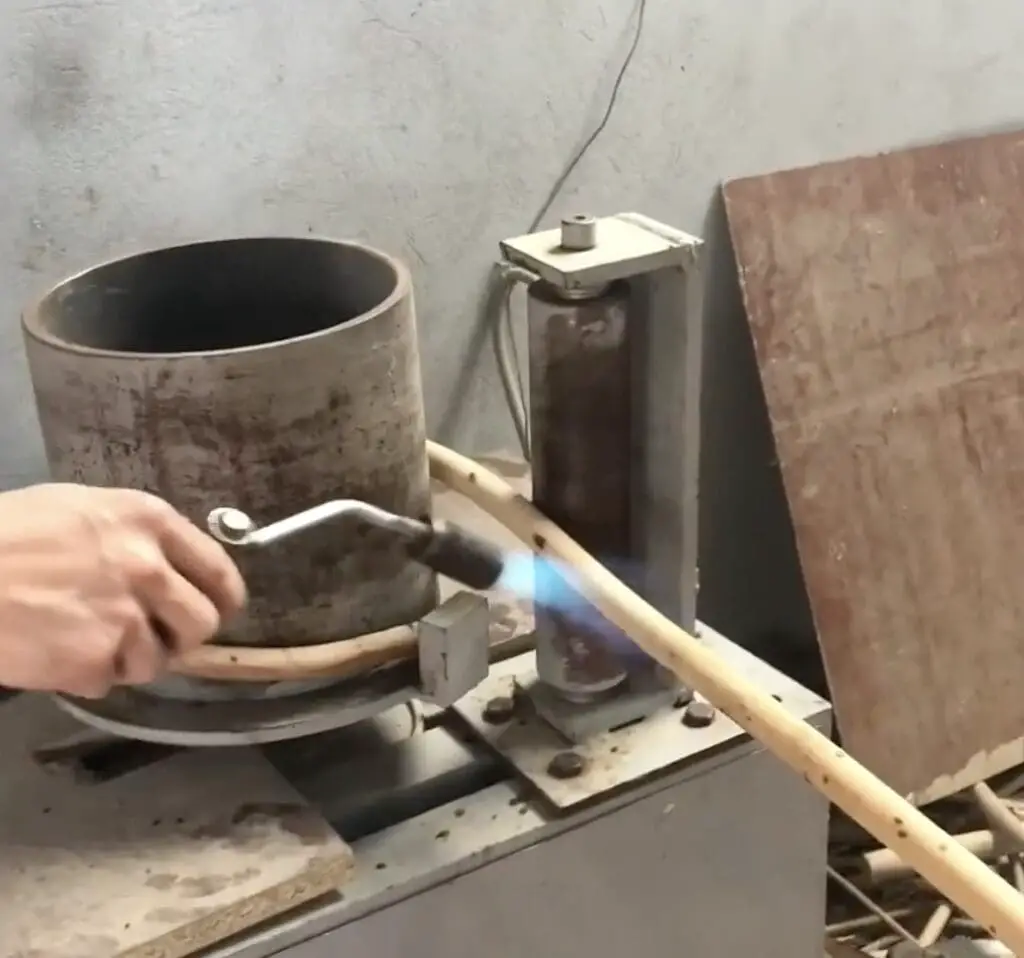
Step 3 – Bending Of Rattan
The next step is to bend the rattan. The rattan is bent while using fire or steaming of the rattan. The fire will be used slightly on the rattan as the rattan is bent using a mold or a machine.
To see how rattan is bent, you can watch our short video about bending rattan.
Step 4 – Smoothing The Rattan Material Surface
The next step is to smooth out the rattan surface. At this point, any burn marks or other imperfections will be removed from the rattan.
Sandpaper or other tools can ensure that the rattan pieces are prepared and ready for assembly.
Step 5 – Assembly Of Rattan
The rattan furniture parts are then all assembled to make the furniture. For furniture, they will use screws, staples, and even wrapping of the rattan on the frame to ensure it is very stable.
This is an important part as the frame must be completely stable so the furniture will have no issues.
Step 6 – Weaving Of Rattan
A lot of the rattan will be woven, so the rattan’s material must be prepared for the weaving phase. This means the rattan needs to be wrapped around the rattan and secured using nails and wood screws.
Once the rattan strips or is secure, the other can be braided or woven using rattan.
Watch our video below to show some very fast rattan furniture weavers to see how rattan is woven, even though this faux rattan is the same process as genuine rattan.
Step 7 – Finishing And Securing Rattan Materials
Once all the rattan has been woven, the rattan materials must be secured so they will not come off or unweave. This is an essential step as the rattan materials must be secured.
Step 8 – Burn Off Small Fibers And Check Rattan
Now that the entire piece of furniture has been woven and all the rattan is secured in place, the next step is that the furniture must be checked. Furniture will be slightly burned to get all the fibers off of it. Also, be checked for any type of splinters or other types of defects.
Step 9 – Finish Or Top Coat Is Applied
Most rattan requires a type of finish or topcoat applied to the rattan. If you want a rattan with a color finish, then the finish will be sprayed at this step. Other techniques will be applied at this step if you need to have some hand rubbing on the finish.
Some people prefer that rattan will be the natural color; in that case, just a thin topcoat may be sprayed on top of the rattan.
Step 10 – Final Inspection Of Rattan Furniture And Packing
Before the rattan furniture can be shipped out, it must go through the final inspection and packing phase. One of the essential parts of the entire process is checking each piece carefully to ensure it is a quality piece of rattan furniture.
Each piece of furniture or rattan product also needs to be carefully packaged.
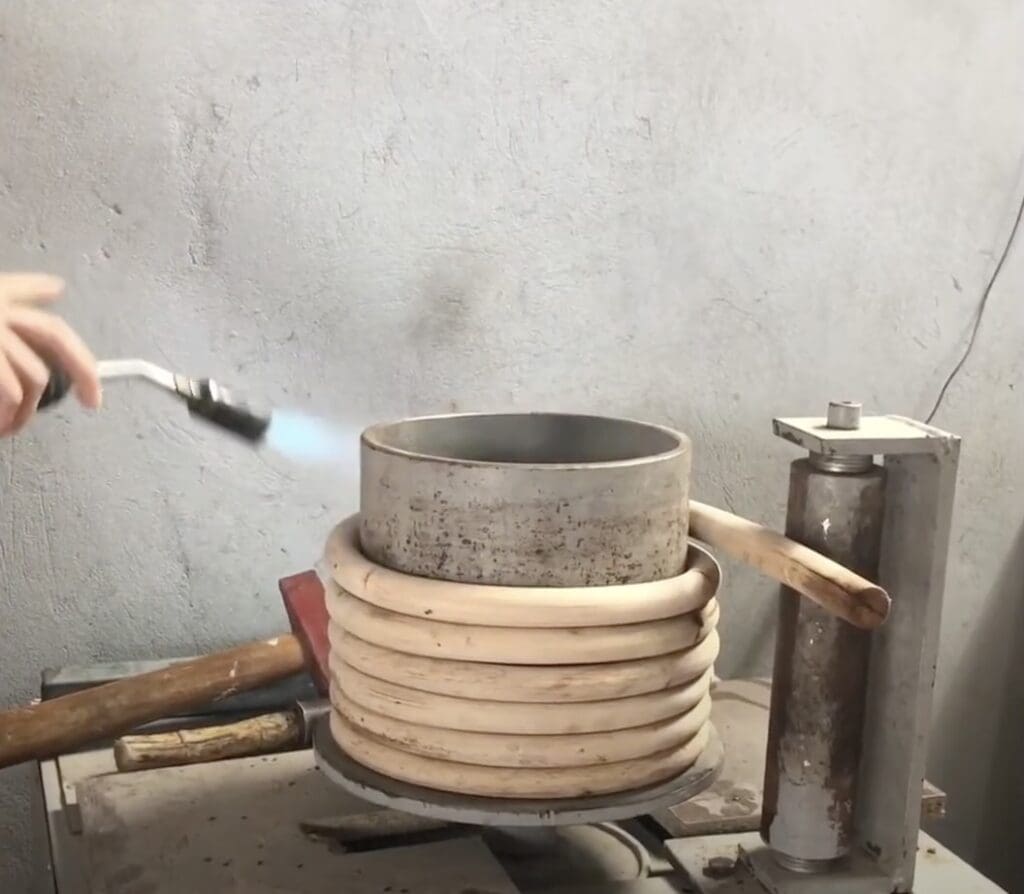
Basic Types Of Rattan Furniture Production Explained
Rattan is a very versatile kind of natural material. The rattan vine grows naturally in the jungles of Southeast Asia. Rattan is one of the fastest-growing natural materials, as it regenerates itself every 5 to 7 years.
Rattan is also strong and bendable, and as a bonus, the growth of rattan helps transform CO2 into clean, fresh air.
Here are the primary ways that rattan is used to make furniture production:
Rattan Is Bent Into Shape
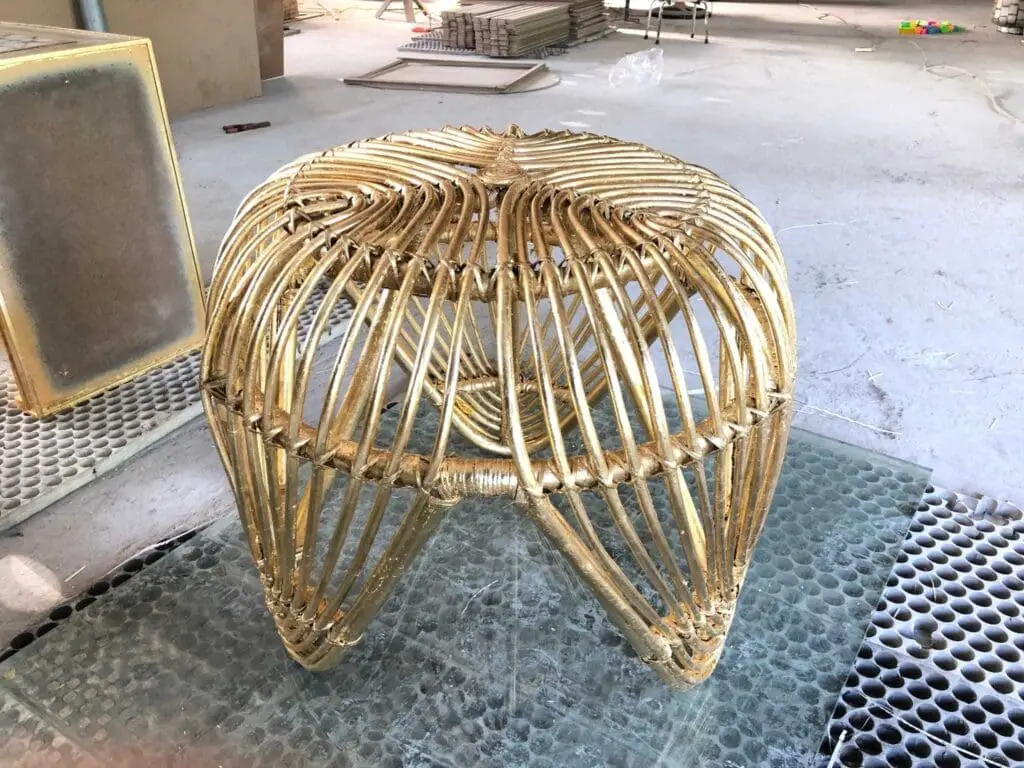
The rattan is heated and bent into various shapes. This is because the rattan is a solid material that can be bent when heated. Machines are used to bend the rattan in all kinds of shapes and sizes.
Rattan Is Woven

Rattan is also cut into strips of various sizes and then woven in various weaves. Rattan can be woven onto a furniture frame.
Rattan can also be woven for caning, usually put on a wooden furniture frame. Even the rattan caning can come in a variety of weaves and sizes. This shows how versatile the rattan materials are because they can be used for various furniture items.
Rattan Is Wrapped Around The Frame
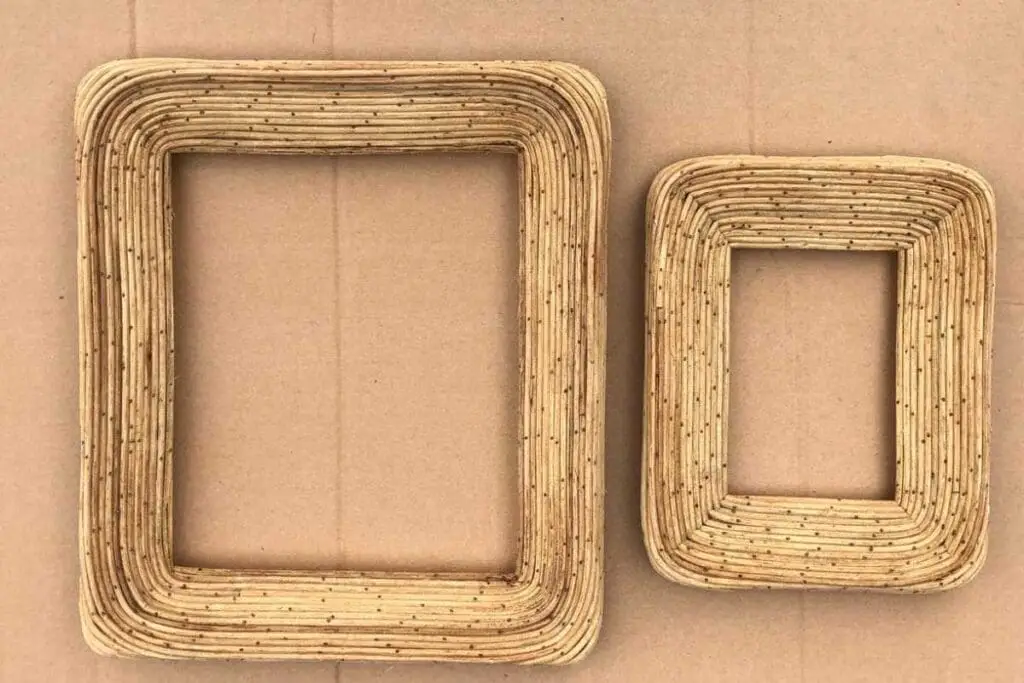
Sometimes, the rattan is wrapped around wooden furniture frames. This is another method that rattan can use for furniture and other home decor production.
If you are interested in seeing how Mondoro can help you with your rattan furniture and other home decor products – we would love to talk to you about how we can help you.
Find out more about how Mondoro can help you create, develop, and manufacture excellent home decor and furniture products – don’t hesitate to contact me, Anita. Check out my email by clicking here or become a part of our community and join our newsletter by clicking here.
Mondoro gives out a FREE Lookbook to anyone interested. You can receive a copy of our latest Lookbook by clicking here.
Listen to our Podcast called Global Trade Gal. You can find it on all major podcast platforms. Try out to listen to one of our podcasts by clicking here.
Subscribe to our Mondoro Company Limited YouTube Channel filled with great videos and information by clicking here.
Frequently Asked Questions
Why does rattan furniture require a multi-step manufacturing process?
Rattan furniture undergoes a complex manufacturing process due to its natural properties and the need for skilled craftsmanship. Each step contributes to the final product’s quality.
What is the first step in the rattan furniture manufacturing process?
The initial step involves cutting the rattan material, sorting it, and determining the appropriate size. Qualified workers assess different characteristics like thickness, hardness, curvature, and color to ensure proper material usage.
Why is it necessary to straighten rattan material in the manufacturing process?
Rattan, being a natural material, may naturally bend or twist. The factory straightens rattan using techniques like steaming, making it pliable and easier to work with.
How is rattan bent in the manufacturing process?
Rattan is bent using fire or steam, with a mold or machine facilitating the process. This step is crucial for shaping the rattan into the desired form.
What is the purpose of smoothing the rattan material surface?
Smoothing the rattan surface involves removing any burn marks or imperfections. Tools like sandpaper are used to prepare the rattan pieces for assembly.
How is rattan furniture assembled after individual parts are prepared?
The rattan furniture parts are assembled using screws, staples, and wrapping the rattan on the frame. Stability is crucial during this step to ensure the furniture is free from issues.
Why is weaving an important step in rattan furniture manufacturing?
Weaving involves securing rattan strips around the frame, using nails and wood screws. This process gives the furniture its distinctive look and structure.
What is the significance of securing rattan materials in the manufacturing process?
Once rattan is woven, it needs to be securely fastened to prevent unraveling. This step ensures the stability and durability of the rattan furniture.
Why is burning off small fibers and checking rattan necessary in the manufacturing process?
This step involves burning off fibers, checking for defects, and ensuring the furniture is free from splinters. It guarantees a smooth and flawless finish.
What happens during the final inspection and packing phase in rattan furniture manufacturing?
Before shipping, each piece undergoes a final inspection to ensure quality. Additionally, meticulous packaging is done to protect the rattan furniture during transportation.
Related Content
Hand-weaving Faux Rattan In Vietnam, What You Need To Know
Vietnam is a major manufacturer and weaver of faux rattan furniture and other faux rattan items; Vietnam has readily available faux rattan materials and a highly skilled workforce that can weave complex faux rattan wicker furniture and other faux rattan items.
You can discover more by reading Hand-weaving Faux Rattan In Vietnam, What You Need to Know by clicking here.
What Is The Rattan Material Used In Home Decor Products?
Rattan is best described as a climbing palm that will scramble through a forest and grow overall vegetation. Rattan is a very good material for home decor furniture and accessories as it is natural and strong but can also take a variety of stains and paints. There are many steps that must be taken to process rattan properly. Vietnam has a long history of rattan and bamboo production.
You can learn more by reading What Is The Rattan Material Used In Home Decor Products? by clicking here.
Hand Weaving Rattan Mats for Home Decor Products, What You Need To Know
The rattan mats are woven by hand on handlooms with a small electrical motor. The rattan is cut into small pieces and either dyed or left natural before handwoven. The workers who weave the rattan must be highly skilled and be able to work very quickly and accurately. There are various home decor and home furniture products that the rattan mats can use.
By clicking here, you can learn more by reading our blog Hand Weaving Rattan Mats for Home Decor Products, What You Need To Know.

